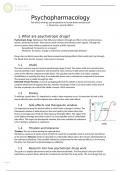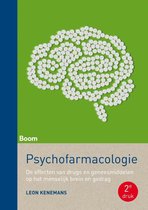Summary
Summery/Samenvatting psychofarmacology
- Course
- Institution
- Book
This summery contains every aspect for the exam of psychopharmacology University Utrecht, Psychology. At the end of summery there is a overview of all the drugs/substances spoken of in the book, and a short summary of the working mechanism. This summery is based on the book of Leon Kenemans, second...
[Show more]




